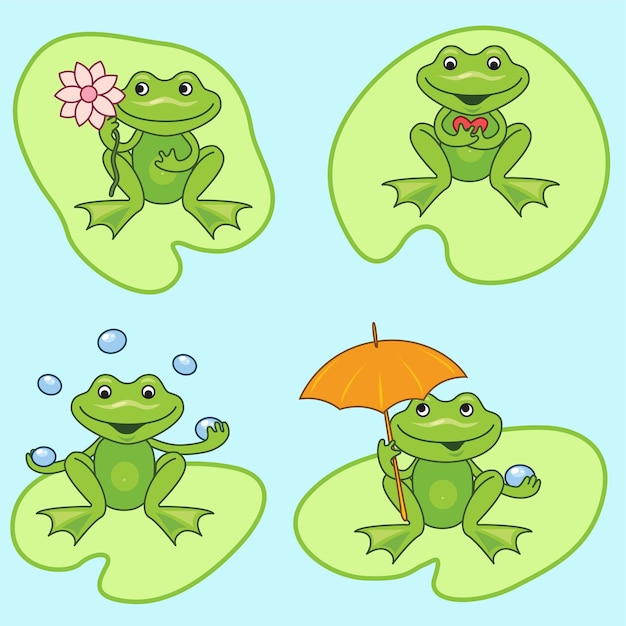Fascinating Facts about Frogs for Kids

Frogs are amphibians, which means they can live both on land and in water.
There are over 4,000 different species of frogs in the world.
Frogs have strong hind legs, which allow them to jump long distances.
Female frogs are usually larger than male frogs.
Frogs have sticky tongues that they use to catch insects and other small prey.
Some frogs can change color to blend in with their surroundings.
Frogs do not drink water like humans do. They absorb water through their skin.
Frogs lay eggs in the water, which hatch into tadpoles.
Tadpoles have gills for breathing underwater, but they develop lungs as they grow into frogs.
Frogs use their bulging eyes to see prey in all directions.
Some species of frogs have webbed feet, which help them swim faster.
The largest frog in the world is the Goliath frog, which can grow up to 13 inches long.
Frogs have been on Earth for over 250 million years, which makes them one of the oldest species.
Certain species of frogs can jump up to 20 times their body length.
Frogs are more active at night and sleep during the day.
Frogs have a unique mating call, which they use to attract a mate.
Some frogs hibernate during the cold winter months.
Frogs have a protective layer of skin that helps them stay moist.
Frogs have a good sense of hearing and can detect low-frequency sounds.
Some frogs have poisonous skin, which can be deadly to predators.
Fascinating Facts about Frogs for Kids part 2
Frogs can live in a variety of habitats, including forests, grasslands, and deserts.
Frogs play an important role in the ecosystem by controlling insect populations.
The smallest frog in the world is the Paedophryne amauensis, which is less than 1 centimeter long.
Frogs have a unique respiratory system that allows them to breathe through their skin.
Frogs have long, sticky tongues that they can shoot out to catch prey.
Frogs have a third eyelid called a nictitating membrane, which helps protect their eyes underwater.
Frogs have a long lifespan compared to other small animals, with some species living up to 20 years.
Some frogs can survive freezing temperatures by producing antifreeze-like substances in their bodies.
Frogs are ectothermic, which means their body temperature changes with the environment.
Frogs are an indicator species, meaning their populations can indicate the health of an ecosystem.
Frogs help scientists study pollution levels in water, as they are sensitive to changes in their surroundings.
Frogs can regenerate their limbs if they are injured or lost.
Certain species of frogs have sticky toe pads that allow them to climb trees and walls.
Frogs have a unique way of swallowing prey by pulling their eyes back into their head.
Frogs have a two-chambered heart, unlike mammals and birds that have four chambers.
Frogs produce a variety of sounds, including chirps, croaks, and whistles.
Frogs have bulging eyes to help them see in dim light and underwater.
The poison dart frog is one of the most toxic animals on the planet.
Frogs shed their skin regularly to keep it healthy and free from parasites.
The golden dart frog is bright yellow in color, warning predators of its toxic nature.
Frogs have long, powerful hind legs to help them leap away from danger.
Some frogs have transparent skin, allowing us to see their internal organs.
Frogs play an important role in food chains, serving as both predator and prey.
The male frog’s call can be heard from up to a mile away.
Frogs are fascinating creatures that have captivated the imagination of humans for centuries.

